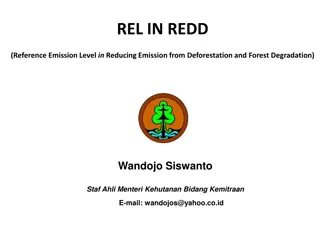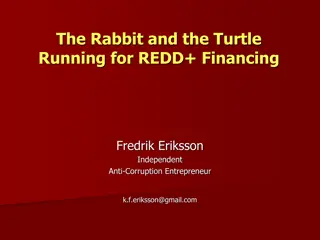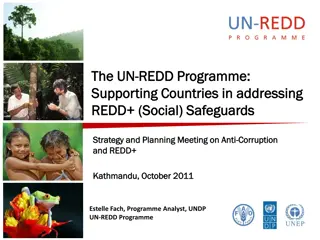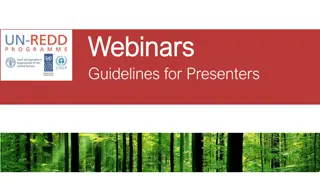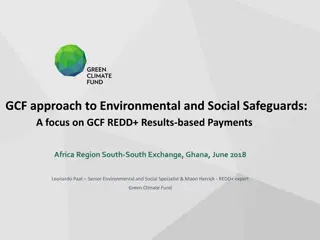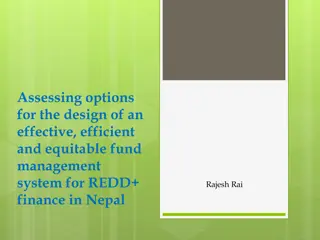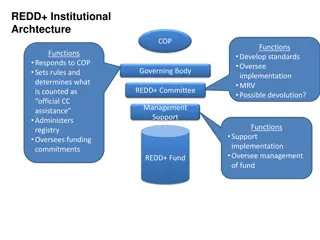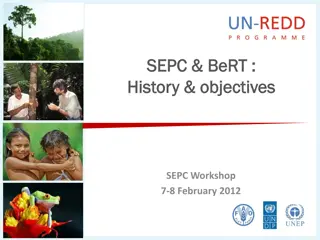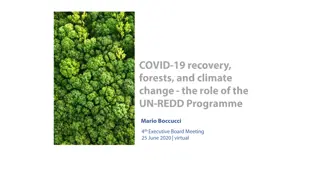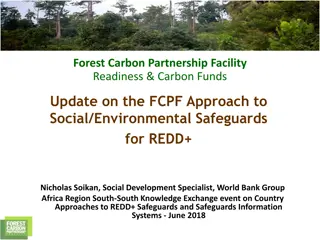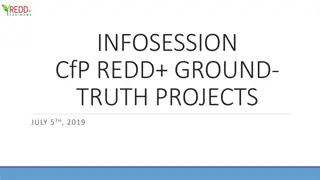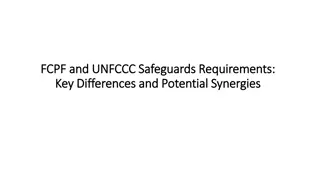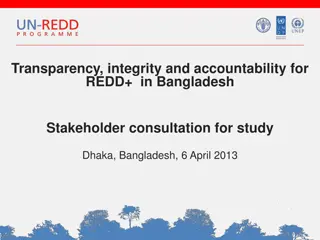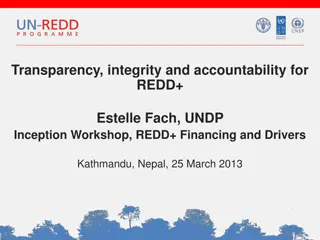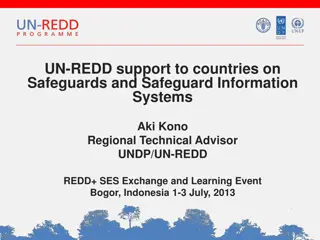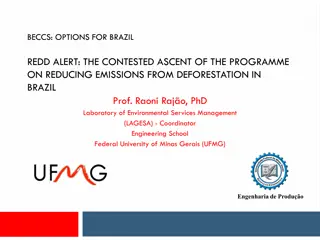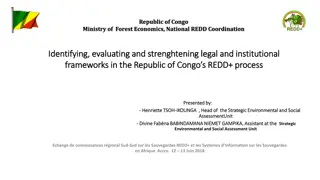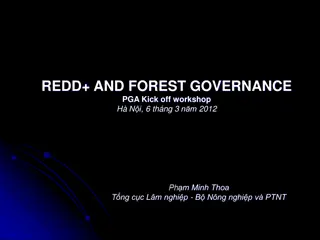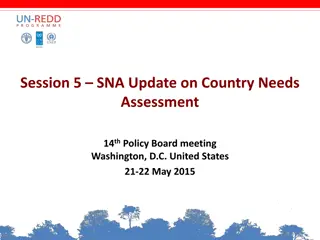Enhancing Natural Resource Management Through No-Regrets REDD+: A Cross-Sectoral Perspective
Exploring the concept of no-regrets REDD+ as a proactive approach to natural resource management, this presentation emphasizes the importance of transformational change before carbon financing. It delves into how countries leverage REDD+ for wider resource management goals, showcasing examples from Mala.i. The cross-sectoral approach enhances collaboration across departments and ministries, with a focus on national land use standards and forest inventories. By prioritizing immediate benefits like capacity building and governance, countries can pave the way for sustainable practices and reduced emissions.
- REDD+
- Natural Resource Management
- Cross-Sectoral Approach
- Transformational Change
- Sustainable Practices
Download Presentation

Please find below an Image/Link to download the presentation.
The content on the website is provided AS IS for your information and personal use only. It may not be sold, licensed, or shared on other websites without obtaining consent from the author. Download presentation by click this link. If you encounter any issues during the download, it is possible that the publisher has removed the file from their server.
E N D
Presentation Transcript
No regrets REDD+ A cross-sectoral approach Yoel Kirschner April 29, 2015 1
Presentation Overview Presentation Overview Guiding Questions: How do countries with vastly different resource statuses take advantage of the same mechanism? How does Mala iuse REDD+ to achieve its wider natural resource management goals? Intro to no regrets REDD+ in a cross-sectoral approach National land use/land cover standards Inclusive resource/forest inventories The REDD+ Expert Group Vision of 5-Year REDD+ Action Plan 2
No regrets REDD+ The idea that: Transformational change in the natural resource management sector can be realized before carbon financing comes to fruition. Results-based payments considered secondary over more immediate benefits, such as: capacity building, improved governance, greater clarity for land tenure, 3
+ REDD Conservation of forest carbon stock Sustainable management of forests Enhancement of forest carbon stocks (Countries with low D&D still have incentive to engage in REDD+) Reduced emissions from deforestation and forest degradation (Countries with high D&D can benefit from results- based payments) 4
A Cross A Cross- -Sectoral Approach Sectoral Approach REDD+ in Mala i provides a unifying structure to direct common efforts in natural resource management. For example: National Land use/land cover standards developed for REDD+ can be used across departments and ministries National Forest/Resource Inventory design incorporating biodiversity, agriculture, and socio-economic indicators offers value to many sectors REDD+ Expert Group is a multi-stakeholder forum where different sectors provide input to achieve mutual goals 5
Creation of national Creation of national land use/land cover standards standards How do we create a national strategy without knowing how much forest is left? What is our annual rate of forest loss? Cuts across departments and ministries (Forestry; Surveys) 6-LULC classes (Forest land, cropland, grassland, wetlands, settlements, other) following IPCC guidelines Subclasses (managed/unmanaged forest, crop types, urban/non- urban settlements, water/dambo) reflect unique national circumstances Ensures coherence and comparability over time; forested lands managed by more than one department 6
Creation of multi Creation of multi- -purpose, scalable purpose, scalable (National) Forest/Resource Inventory Inventory of forest, biodiversity, agriculture, and socio-economic data benefits wider range of stakeholders than forest sector Resource Inventory vs Forest Inventory Enables better coordination between sectors Scalable from PERFORM s pilot sites, following phased approach established in Cancun learning by doing emphasizes training in capacity gaps, including hands-on involvement of local communities Links to Remote Sensing and GIS to enable effective integration (size of inventory plot : area of spatial resolution) 7
Following Cancun Agreements, the piloting of FI/RI will take place in PERFORM project sites, with intention of scaling up to national level 8
REDD+ Expert Group REDD+ Expert Group and multi and multi- -sector forum sector forum a national multi a national multi- -stakeholder stakeholder 7 private sector firms 20 Civil Society Organizations 10 Development Partners 6 Government Departments 4 Ministries 6 Academic Institutions 2 Media Groups 9
5-Year REDD+ Action Plan 5-Year REDD+ Action Plan highlights No Regrets approach emphasizes transformative effect of REDD+ in NRM, regardless of carbon financing/Results-Based Payments timeline Target 3.3.1.A: Policy Assessment Focus on coherence across NRM sector (Forestry vs Agriculture) Target 3.3.2.B: Clarify land tenure address tenure insecurity, conflict, and enforcement (informs strategy development) Target 5.1: Communications Strategy Includes capture, storage, and absorption of knowledge. Accessible for all Malawians. How well are we integrating REDD+ into Mala i s larger environmental and economic vision? How does REDD+ lead to prosperity? 10
Our vision: A Mala i where hills and valleys will be covered with bountiful forest landscapes that deliver a high and sustained quality of life for countless generations. From this abundance, mother Mala i will shed tears of joy that will quench the thirst of her sons and daughters and sustain herds of antelope and schools of chambo. 11


